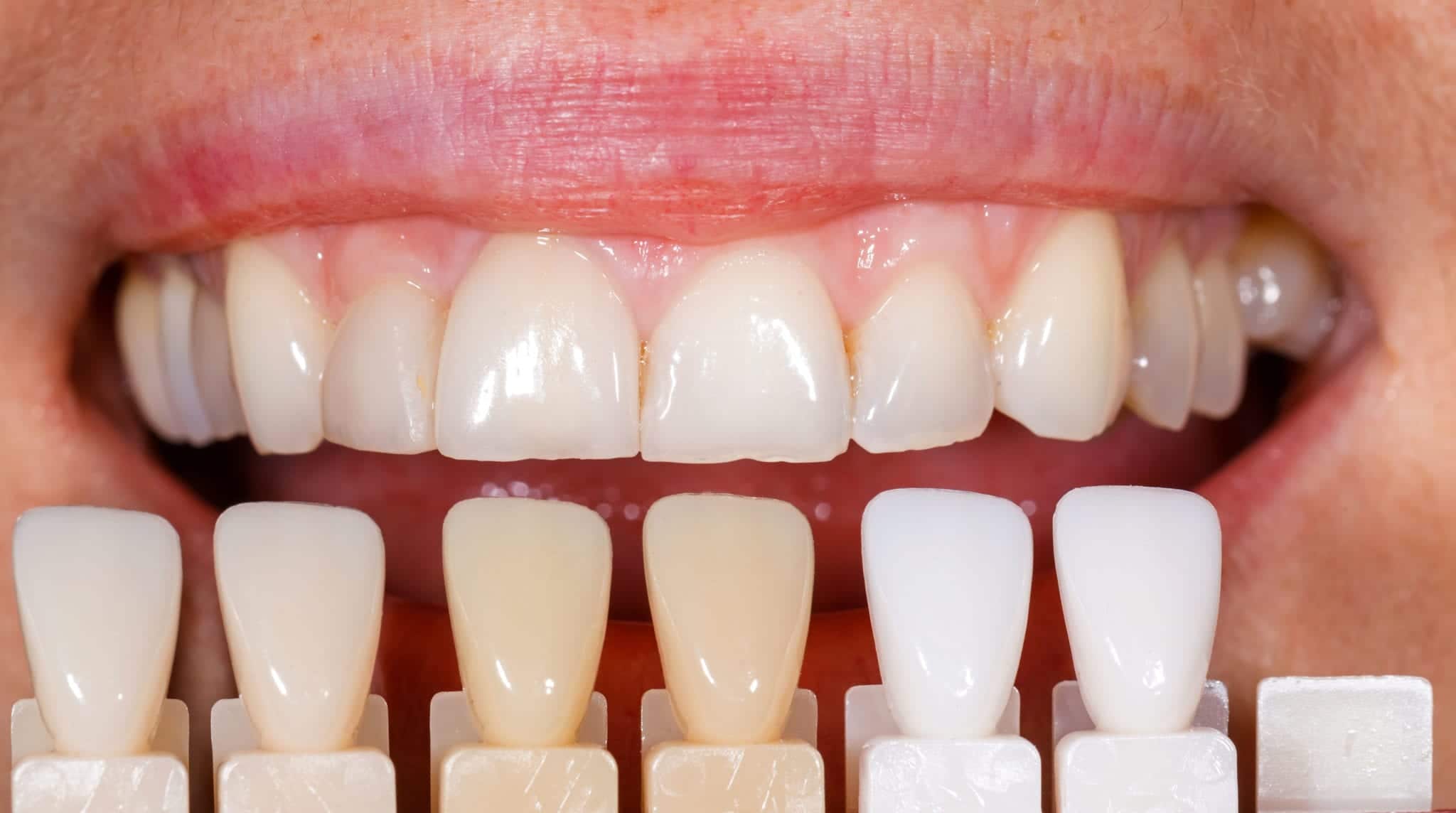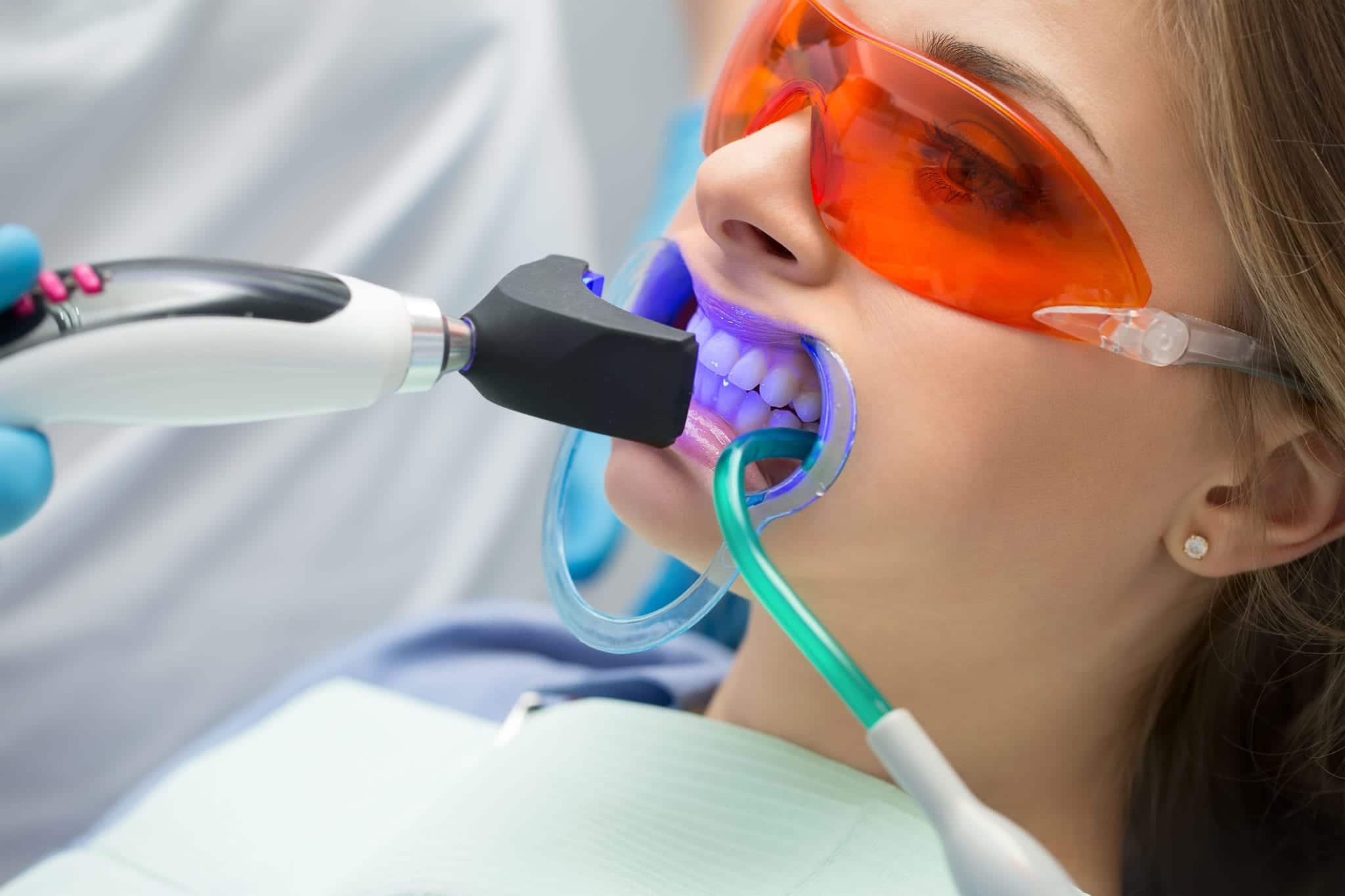
Tooth whitening. Tooth color restoration. Maybe you’ve heard these terms at the dental office. Or seen them online in advertisements. They kind of sound similar… but are they?
Absolutely not. In fact, these two procedures have very little to do with each other, but both can be used together to give you your best, most beautiful smile.
So, what exactly are they? Let’s look at each one.
Defining Tooth Whitening
Of the two, tooth whitening is probably the one you’ve heard the most about and likely the one you understand better. After all, there are whitening toothpastes, whitening strips, whitening mouthwashes, whitening pens… the list goes on and on. Plus, tooth whitening is exactly what the name sounds like: it is a way to make your teeth look whiter.
What exactly does tooth whitening do? In short, it removes stains and discoloration from your teeth.
How do teeth get stained or discolored? All kinds of ways. Using tobacco. Drinking red wine, coffee, cola, or other dark-colored liquids. Poor dental hygiene. Aging. Trauma. Too much fluoride or using tetracycline antibiotics during development.
Some of these stains occur on the outside of your teeth, and some occur on the interior. Of the two types, whiteners are far better at removing exterior stains than interior ones.

What options do you have for whitening your teeth? While there are all kinds of over-the-counter methods and products that claim to whiten your teeth, what most people mean when they talk about whitening is going to the dentist and getting either an in-office or take-home treatment.
At South Florida Dental Care, we offer two types of take-home whitening treatments for your convenience:
- Nite White. In just three nights, Nite White Excel 3 has been shown to whiten teeth an average of 6.5 shades and, in some cases, up to 13 shades. Not only is it the fastest take-home treatment we offer, it’s also designed with sensitive teeth in mind, so you never have to worry about suffering while you whiten.
- Opalescence. If you want to whiten the interior of your teeth, opalescence is the way to go. It doesn’t matter if your interior stains are due to aging, congenital factors, pharmalogic issues, systemic problems, trauma, or something else entirely.
What should you know about whitening? Let’s run down just some of the more important items on the list:
- Whitening isn’t permanent. Your stains will return. How quickly they return largely depends on your habits and lifestyle, but you can expect to need another whitening treatment in a year at most if you want to maintain a bright smile.
- It shouldn’t be done while pregnant. The effect of whitening on a fetus isn’t known.
- Serious side effects are unlikely… but your teeth may be temporarily sensitive and your gums may be mildly irritated.
- You must take care of cavities first. Otherwise the chemicals can get into them and cause additional problems.
- Whitening only whitens teeth. It won’t work on fillings or other types of caps or replacement teeth, so whiten first and then do those other procedures.
Now that you have a pretty clear and thorough understanding of tooth whitening, it’s time to dive into tooth color restoration.
Defining Tooth Color Restoration
Despite the name, tooth color restoration isn’t just a fancy way of saying “tooth whitening.” In fact, while whitening is considered purely cosmetic, tooth color restoration serves another, more necessary purpose.
What exactly does tooth color restoration do? As the name implies, tooth color restoration is about restoring your teeth to their natural color. However, it does this in a very specific way, and will only work on certain teeth.
Which teeth? Any that currently have silver/mercury fillings. Because tooth color involves something you’re probably more familiar with: composite fillings. The idea behind tooth color restoration is that you can make your teeth look more natural by replacing silver/mercury fillings with tooth-colored composite ones.
Why would you want to replace your composite fillings? There are a number of reason that people decide to replace them.
The first is aesthetic. As mentioned above, they can be colored to match your teeth, which means people won’t be looking at a row of silver when you open your mouth.
That, however, is just one reason. While the risk is low, some people are worried about mercury poisoning from older fillings. Additionally, it has been found that silver/mercury fillings can actually push a tooth apart over time, leading to fractures.
What should you know about tooth color restorations? Here are some important things to note:
- They don’t last as long as amalgam (silver/mercury) fillings.
- Your insurance may not cover them. Some insurance plans don’t, whereas practically all plans cover amalgam fillings.
- You should get composite fillings after having your teeth whitened. For two related reasons. Whitening processes don’t work on composite fillings. So, if you have your dentist match the color of your composite fillings to your stained teeth, they’ll be darker if you do get your teeth whitened. On the opposite side of that spectrum, waiting to get your composite fillings until after a whitening will cause the dentist to match them to this whiter, brighter color.
Using Teeth Whitening and Tooth Color Restoration Together
You can probably already see how to best use these two processes together to give yourself the best possible smile. Get your teeth whitened while leaving in amalgam fillings and your teeth will still appear darker and less aesthetically pleasing. Replace silver fillings with composites without whitening your teeth, and they’ll still look stained.

Don’t take half-measures. Reach out to our office to talk about the best way to proceed and how to schedule these two procedures to ensure the whitest, brightest possible smile when all is said and done.






